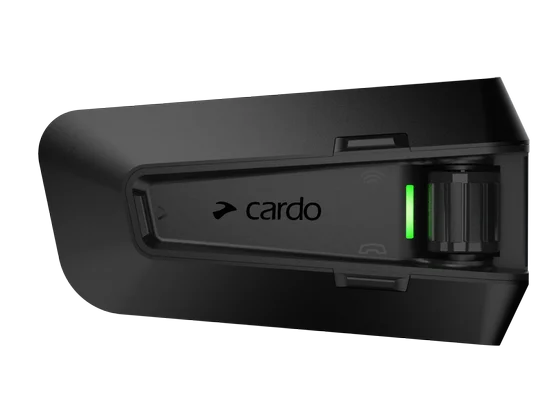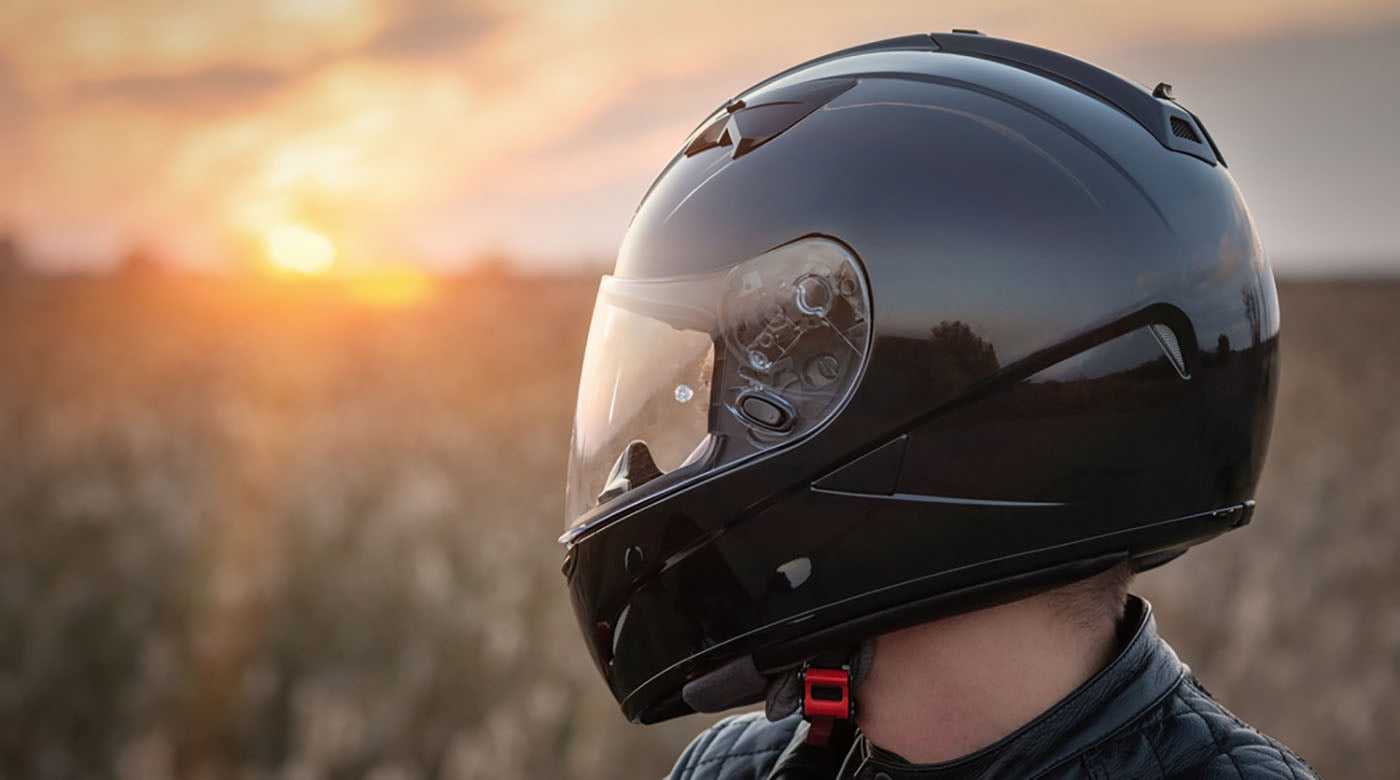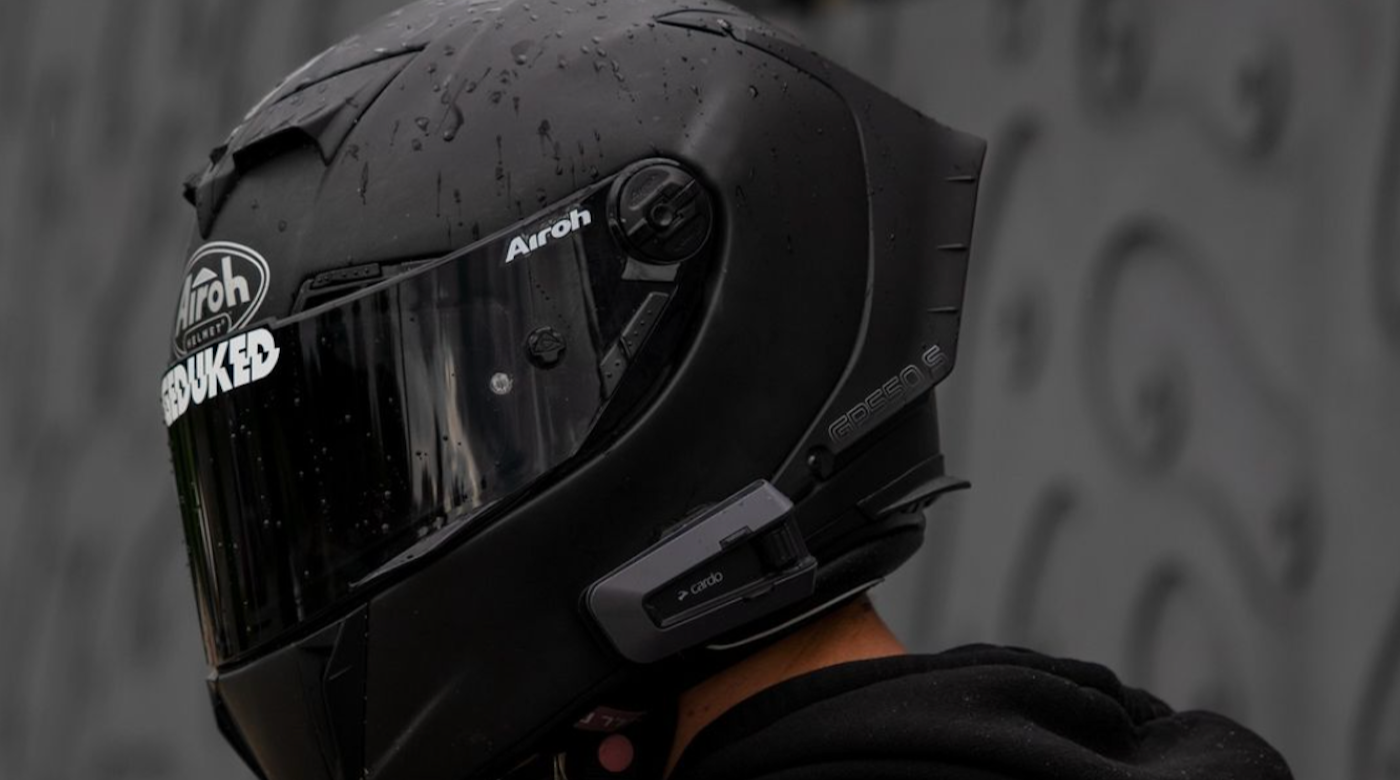Le port du casque réduit le risque de blessure à moto de 88 %. Mais si la loi exige que vous portiez un casque à chaque déplacement, elle ne précise pas quel type de casque est le mieux adapté. Selon vos préférences, vous pouvez porter un casque intégral ou un casque ouvert, mais le niveau de protection ne sera pas forcément proportionnel au niveau de confort. Découvrez ce qui différencie un casque intégral d'un demi-casque, afin de protéger votre tête de la manière qui vous convient le mieux.
Casques intégraux
Les casques intégraux recouvrent l'ensemble de la tête à partir du menton, offrant ainsi une protection maximale. Ils sont munis d'une courte sangle qui s'attache sous le menton. La visière vous permet de voir clairement la route. L'intérieur est souvent ventilé afin de laisser passer l'air sur votre visage. Les modèles plus perfectionnés sont dotés de revêtements antibuée pour tenir compte des changements soudains de température de l'air.
Vous pouvez associer n'importe quel casque intégral à un intercom moto Bluetooth pour vous connecter sans fil à votre téléphone ou à votre GPS, et communiquer avec vos compagnons de route ou vos passagers sans signes de la main. L'appareil utilise la communication dynamique par maillage pour connecter automatiquement jusqu'à 15 utilisateurs, dès lors qu'ils se trouvent à portée, et il ne se déconnecte pas lorsque vous changez de position. Téléchargez l'application Riser et connectez votre oreillette pour envoyer des alertes automatiques en cas d'accident. L'appli préviendra les autorités si vous n'êtes pas en mesure d'appeler à l'aide.
Obtenez le Packtalk Pro dès aujourd'hui !Demi-casques
Les demi-casques, ou casques ouverts, ne couvrent que le sommet de la tête à partir des oreilles. Ils préviennent les blessures crâniennes graves en cas d'accident, mais ne protègent pas le visage des éraflures, des collisions et des bris de verre lorsqu'un autre véhicule est impliqué. La sangle est reliée au casque en quatre points et se clipse sous le menton.

Source : F Armstrong Photography/Shutterstock.com
Portez des lunettes de protection en complément du casque ouvert pour protéger vos yeux des débris et des éblouissements. Placez-les sous votre casque. Vous pouvez fixer un intercom moto Bluetooth sur votre demi-casque à l'aide d'un kit demi-casque doté d'un microphone réglable. Vous pourrez ainsi communiquer en mains libres ou vous connecter à vos appareils électroniques sans fil.
Casque intégral ou demi-casque : lequel vous convient le mieux ?
Les casques intégraux offrent une meilleure protection que les modèles ouverts, car ils recouvrent une plus grande partie de la tête. Lorsqu'ils sont ventilés, ils sont plus confortables que les demi-casques associés à des lunettes, car ces dernières peuvent provoquer des irritations. Cependant, plusieurs autres facteurs doivent être pris en compte avant de choisir un style de casque spécifique.
Facteurs à prendre en compte pour choisir un casque
- Température : Un casque intégral offre une isolation contre le vent et le froid. Si vous roulez toute l'année, investissez dans un modèle ventilé et doté de suffisamment d'espace pour un bonnet.
- Coût : Les modèles intégraux peuvent coûter jusqu'à deux fois plus cher que leurs homologues ouverts, mais au bout du compte, votre sécurité n'a pas de prix.
- Durabilité : Un prix plus élevé indique généralement un casque de meilleure qualité. Les modèles monocoque sont fabriqués en fibre de verre, en kevlar ou en polyéthylène. La plupart des casques doivent être remplacés tous les cinq à sept ans. Les demi-casques peuvent être tout aussi résistants, mais la sangle se déchire plus facilement et l'insert en mousse peut se détacher.
- Confort : Choisir entre un casque intégral et un demi-casque est essentiellement une question de confort. Certains motards aiment sentir le vent sur leur visage, alors que d'autres ne supportent pas que les lunettes leur appuient sur le visage. Vous serez bien plus enclin à porter votre casque si vous vous sentez bien dedans.
- Visibilité : Les deux options ne doivent pas vous obstruer la vue, mais le port de lunettes inadaptées pourrait affecter votre vision périphérique. Si vous portez des lunettes et que vous n'aimez pas les lentilles de contact, vous pouvez demander des lunettes de protection à votre vue, ou porter un casque doté de rainures intégrées pour les lunettes, qui évitera qu'elles n'irritent votre visage.

Les casques de moto, quel que soit leur type, sont indispensables. Les casques intégraux et les demi-casques présentent des avantages et des inconvénients, mais ils sont tous deux efficaces pour prévenir les blessures mortelles. Du moment que le casque vous va et qu'il est confortable, vous ne pouvez pas vous tromper, quelle que soit l'option que vous choisissez. Vous souhaitez en savoir plus ? Découvrez ce qui distingue les casques modulaires des casques intégraux.
Découvrez les différences entre les casques modulaires et les casques intégraux ici




